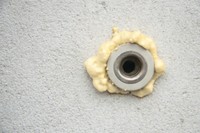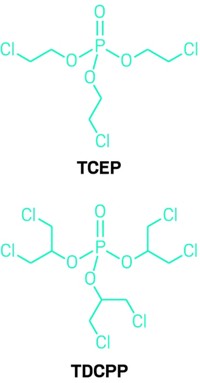Advertisement
Grab your lab coat. Let's get started
Welcome!
Welcome!
Create an account below to get 6 C&EN articles per month, receive newsletters and more - all free.
It seems this is your first time logging in online. Please enter the following information to continue.
As an ACS member you automatically get access to this site. All we need is few more details to create your reading experience.
Not you? Sign in with a different account.
Not you? Sign in with a different account.
ERROR 1
ERROR 1
ERROR 2
ERROR 2
ERROR 2
ERROR 2
ERROR 2
Password and Confirm password must match.
If you have an ACS member number, please enter it here so we can link this account to your membership. (optional)
ERROR 2
ACS values your privacy. By submitting your information, you are gaining access to C&EN and subscribing to our weekly newsletter. We use the information you provide to make your reading experience better, and we will never sell your data to third party members.
Environment
California Proposes Changes For Some Consumer Products
Regulation: State targets substances in paint strippers, childrens’ sleep items, and spray foam for elimination or substitution with safer alternatives
by Cheryl Hogue
March 14, 2014

California is proposing that manufacturers eliminate hazardous chemicals from three types of consumer products, either by removal or reformulation with safer chemicals. The classes of products would be the first targeted under a state initiative for safer consumer products that took effect last year.


One class of products, announced on March 13, encompasses surface cleaners and paint and varnish strippers containing the solvent methylene chloride. Another product category is children’s foam-padded sleep aids, such as nap mats and sleep positioners for infants, made with the flame retardant tris(1,3-dichloro-2-propyl) phosphate (TDCPP). The third type of consumer product is spray polyurethane foam—marketed to do-it-yourselfers for insulating and filling cracks in buildings—that contains unreacted diisocyanates.
Inclusion on the list, however, “does not mean that the state has determined there is a risk of harm posed by the use of these products,” the industry trade group American Chemistry Council said in response to the announcements.
But methylene chloride, TDCPP, and unreacted diisocyanates, particularly toluene diisocyanates, have the potential to create significant hazards to people and the environment, says Meredith Williams, deputy director of California’s Department of Toxic Substances Control. People and the environment are exposed to these chemicals through use of the three types of consumer products targeted in the proposal, she says.
Methylene chloride is widely recognized to be acutely toxic to the nervous system. TDCPP is considered a carcinogen by California’s Office of Environmental Health Hazard Assessment. And unreacted diisocyanates are the leading cause of occupational asthma in the U.S. and the European Union and are suspected to cause cancer in humans, California says.
Finalizing the proposal could take up to 18 months.
Product makers would face varying degrees of difficulty in reformulating their products. Manufacturers of children’s sleeping items could have a straightforward solution: eliminating TDCPP from the products. There is no legal requirement for children’s foam-padded mats to contain flame retardants, Williams says. Adding TDCPP or other flame retardant chemicals to these products isn’t necessary for fire safety reasons, she says. Plus, versions of these products that don’t contain flame retardants are already on the market, she adds.
According to the California agency, there are a number of safer chemical alternatives to methylene chloride for paint and varnish strippers and cleaners. But finding replacements for unreacted diisocyanates in spray polyurethane foam “may be a challenge to manufacturers” because the state is not aware of any alternatives for them, Williams says.





Join the conversation
Contact the reporter
Submit a Letter to the Editor for publication
Engage with us on Twitter